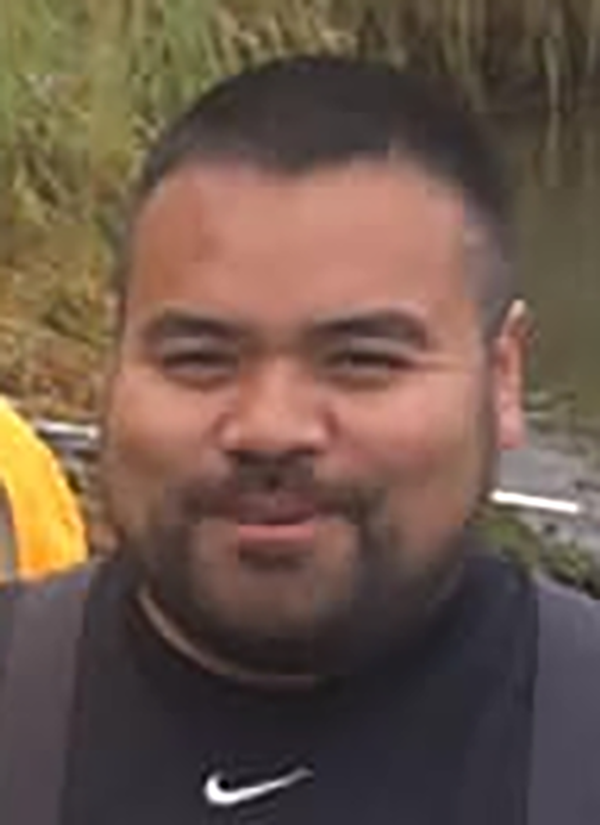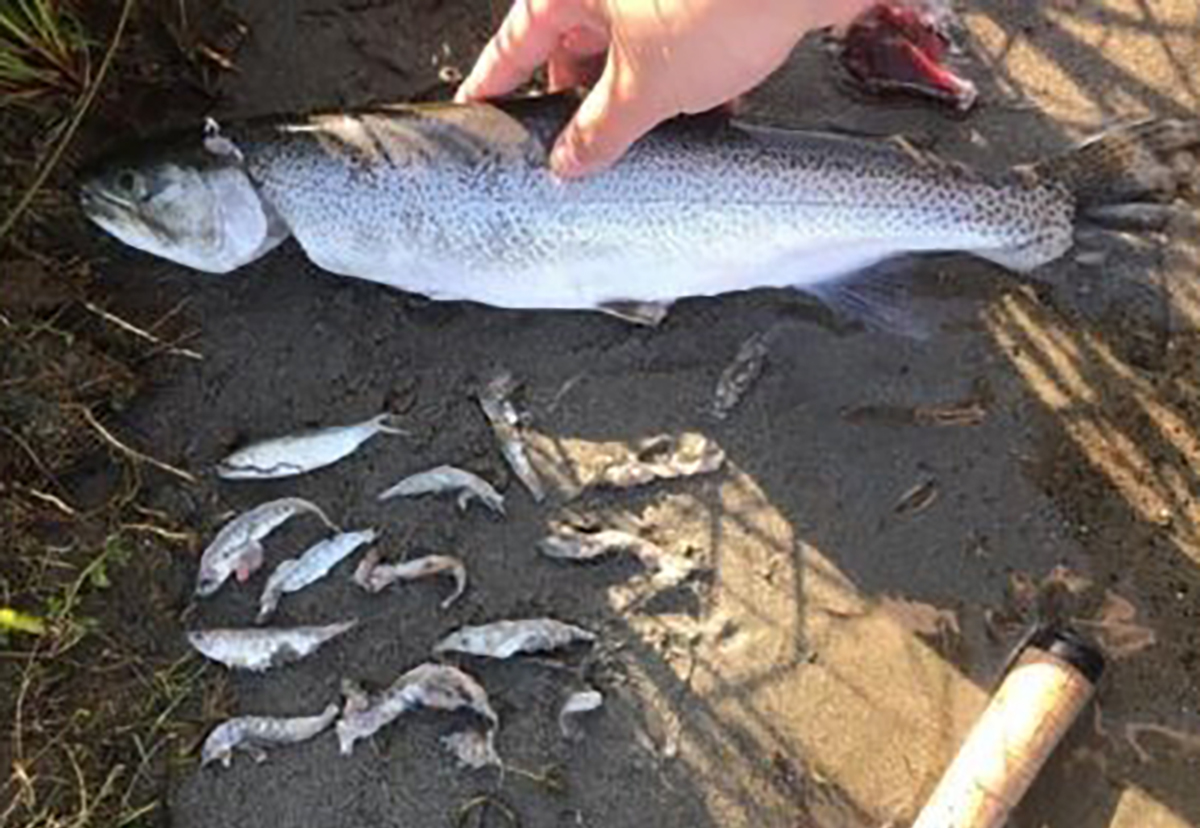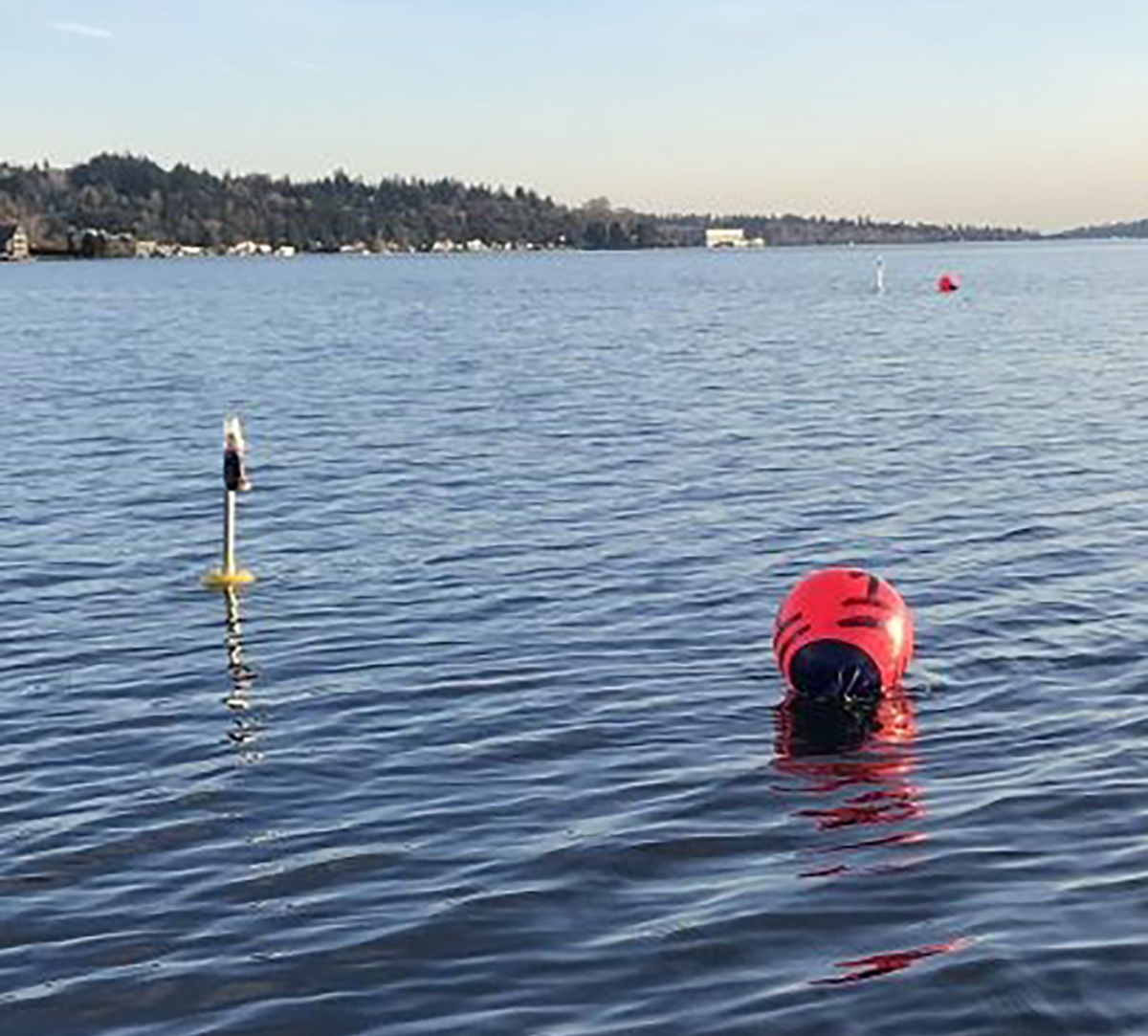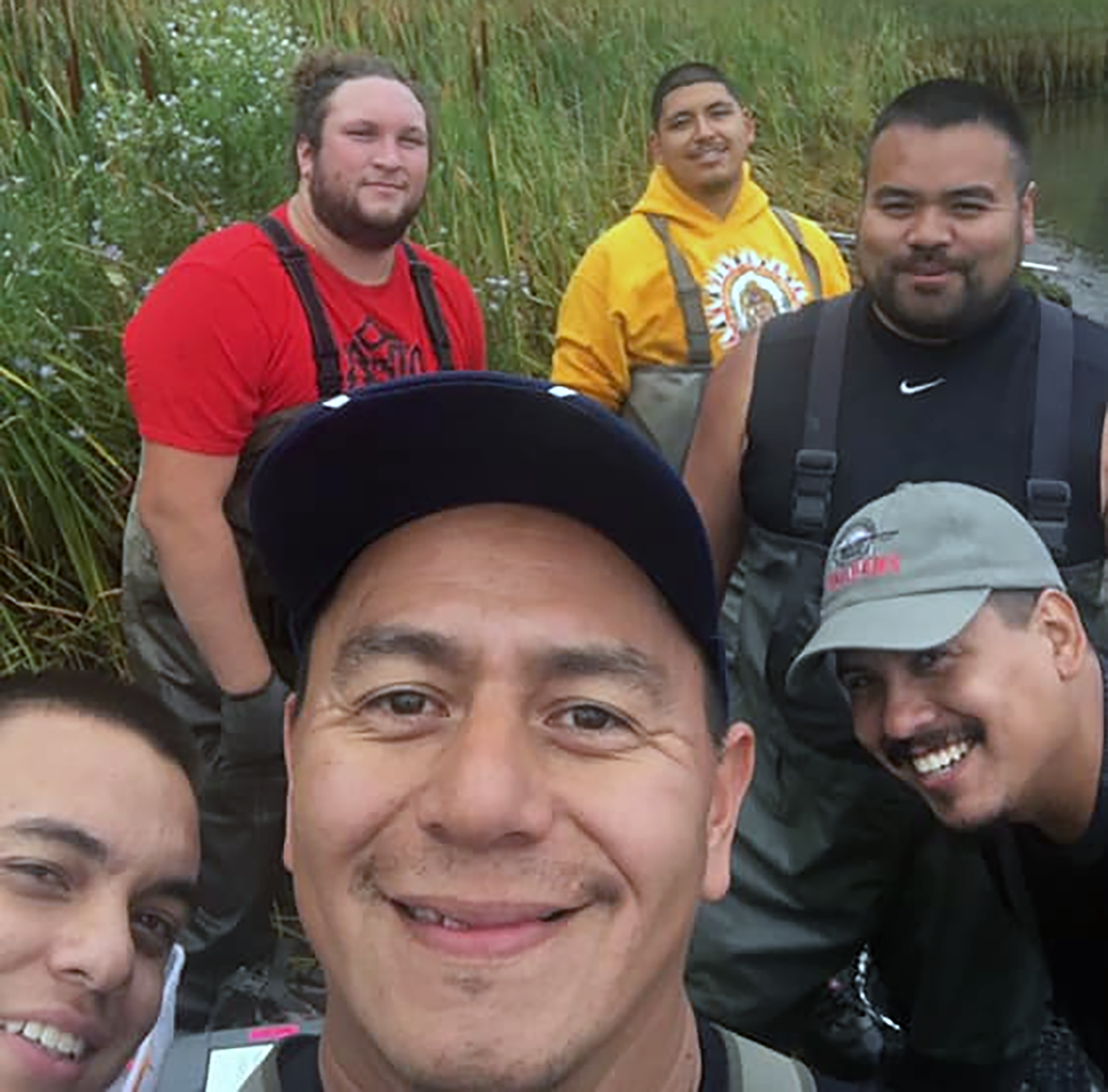Focused on Fisheries
Lee Foulkes
Profession: Program Support Biologist, Muckleshoot Tribe

Degree: Bachelor’s in Marine Biology, UAS
The first member of the Muckleshoot Tribe to work as a marine biologist, Lee Foulkes spends his days playing any number of roles to help protect the Tribe’s fisheries and other resources. He got where he is by taking a very matter-of-fact approach: he identified where he wanted to work, then he went out and obtained the education he needed to get hired there.

Please tell us about your position and what you do.
I am the Program Support Biologist in the Fisheries Department for the Muckleshoot Tribe in Western Washington state, which has hatcheries on the Green River and on the White River. I have been doing this for about two and a half years. I mostly do hands-on work, fieldwork, and I help out wherever help is needed. Bouncing around helps me get a better understanding of the department and how it works. You get to see the department as a system instead of a piece, and how things work, and how the steps move from one to another. So, there is the step of catching the fish, processing it, using the data, and even determining where the fish will go and how it is handled after that.
Usually I help with research, but I also do coordination at the mouth of the Duwamish River. It forks out and there is a commercial shipping yard where they bring in giant barges that carry the shipping container boxes. Our Tribe’s fishing rights extend out to there and as long as the fishery is open our rights supersede their right to drive on the river where we set nets. So, we manage the nets and move them for vessels we have agreements with.
I really enjoy handling fish while working at either of the hatcheries. We keep springers at White River until they are ready to spawn, so we get to physically handle them. We work them up, measure them, and pit tag them so we can identify them. So, if they die we know which fish was what and if there was any relationship between the number of fish dying because they were handled wrong, or if they’re from a different batch - maybe they’re later in the season or earlier in the season. When I was there, they also gave them antibiotics to help them survive until spawning. They also do formaldehyde treatments in the water to help kill fungus. If you just leave them, any open wounds will grow fungus and then they’ll just slowly spread.
A lot of this stuff is seasonal. I help spawn and fertilize the fish eggs. I also help set up their settling ponds. We do sampling when the commercial fishery is up. We scan the fish, see which ones have tags in them, keep the ones with tags in them and take the otolith out, then measure them and get whatever data we’re trying to collect. We work up every fish that the Tribe bought. Because what they do is they buy the fish from the fishermen and then we pay people to process them, and we sell them. We have our own seafood company.
What have you been working on most recently?

Hungry predators gather at the south end of Lake Sammamish in spring to eat just-released salmon smolts like these coho, which spilled out of the belly of a trout caught by Faustino Rincon in 2019.
We just finished a warm-water population study on Lake Sammamish. We are trying to determine the number of different species of predators in the lakes, because only about 25 percent of salmon make it through the lakes and the locks from the hatchery. We lose about 50 percent of the fish in the lakes, and it is estimated we lose another 50 percent of that in the locks. So by the time they get out in the ocean we’ve already lost 75 percent of the fish that are released. There are large-mouth and-small mouth bass, cutthroat, northern pike minnow, and there are also a bunch of other invasive species, but those I listed are the predators that we mainly keep track of.
It is a five-year study, which involves graveyard shifts doing electric shocking. We go along the shore shocking fish, scooping them up, identifying them, tagging them, and releasing them. The warm water studies were at night because the fish are more active then and they go towards the shoreline. So, we would start at 9 PM and then finish around 3 or 4 AM, after however long it took us to work up the fish. We also do gillnetting to see if it is effective at catching the predators we are trying to manage. We really can’t eradicate them; we can only help control the numbers in favor of the salmon.
Could you tell me more about how fisheries are tied to the Tribe?
We have usual and custom fishing rights on the Cedar River, Green River, and White River. So anything that they’re connected to we are usually involved in - surveying, managing, having a commercial fishery if they’re large enough, or just supporting them with hatcheries. A lot of these watersheds are urbanized, especially towards Seattle. Some of the runs are not strong enough for us to have a commercial fishery, but we still support them so that the salmon don’t die off.

Bright orange buoys mark a Muckleshoot Indian tribe net in the east channel of Lake Washington.
We also have a site where we do subsistence shellfish. We bought land on Vashon Island so that we could do that, and that’s where our elders and Tribal members can go to collect oysters and clams. There is some geoduck there too, but since it takes a long time for them to grow there’s not a very large number of them.
The fisheries department is also backed by a casino. It’s mostly vertical integration: we can sell our commercial salmon to the casino for its restaurants. The casino serves a large number of people and uses a large amount of food. Whatever they buy helps pay for efforts on managing the fisheries.
What was your educational journey like?
I started getting my Associate’s in science at Green River Community College and I was almost done, but I transferred to the University of Alaska Southeast (UAS) once I figured out that I wanted to get access to the specialized classes there. I got my Bachelor’s in Fisheries with a minor in Mathematical Science.
UAS was recommended by the director of the Tribe’s fisheries department. It was nice having small classrooms, so we got a feel for the professors and how laid back they were. I also liked the outside courses like kayaking, those were pretty cool. I should have taken more of those.
I was in Juneau for three years. It was hard being off the reservation, being away from all the family and friends that I grew up with. I just wanted to get finished and go home.
I took ceramics at UAS and that was a pretty good class, it helped get me by. I did ceramics at Green River for three years before UAS, so I got pretty good at ceramics. The professor also had a pizza oven he built specifically for pizza which was fairly nice, especially because he was a good cook. The wood-fired pizza oven was 10 feet from where we would throw clay and we could pump out 10, 15, 20 pizzas depending on the number of people there. We’d have events every once in a while and people would bring in food and share it. Not many classes actually do that; a lot of people just go to class and leave as soon as possible. It was a more tight-knit group than some of those other courses.
Why did you choose to go into fisheries?

I figured I would rather be at the mountains or the river, because when I was younger with my uncles we were usually hunting at the river or in the mountains. And I spent some time working at the bingo hall and I realized I didn’t want to spend my days inside of a building. So, I went to the biology and fisheries departments at the Tribe and looked at what was necessary to get a position in each department.
The fisheries director, she gave me an idea of the program structure for employees and the different types of jobs they’ve done. There was a large variety of geologists, mathematicians, biologists, and there are also engineers. So, it wouldn’t just be one job and one type of position available, there would be choices by the time I finished. The fisheries department also sounded more welcoming. There were a nice variety of people. You know when you visit a place and see how the people interact, their mood towards each other and new people? They actually seemed nice and happy. So, fisheries ended up being my choice.
I tried to pick the classes that would be useful for a job in fisheries so that I would be able to have a better understanding or more tools for the job I knew I was going to end up with.
I wanted a job in the end. It is fairly easy to see people who get a degree and end up being a waiter or a security guard or a secretary. I wanted to make sure there was a place at the end of all of this that I could actually return to. So, I tried to make sure there was a goal – instead of just a degree, a job or a career for that degree.
Do you have any advice for current students?
Just keep plugging away. I don’t have a photographic memory, so I just had to keep redoing, practicing, and going over problems multiple times before they actually stuck.
With math, to understand the methods they make you do the longhand and then they show you the shorthand at the next class. Then you keep moving up into different degrees of work and more towards modeling a problem the higher up you go. It shows you how the problem is constructed to give you an understanding of what you’re trying to determine, what piece of information you’re trying to get from the problem. Class after class difficulty increases. It’s like a marathon to keep moving forward.
What’s next for you?
I am trying to do a Master’s program, but I was waiting for COVID to pass because it didn’t seem too stable to be going to school with an infectious virus going around. But I’ll be applying soon. A Master’s degree will be useful to help me move up in my career. I also think it will be useful for a better understanding of analysis of data - the way it’s used, the way it’s collected, why it is collected a specific way or ways.
Interview by Courtney Breest, Alaska NSF EPSCoR. Click here for more Faces of STEM. All photos courtesy Lee Foulkes except where otherwise noted.

